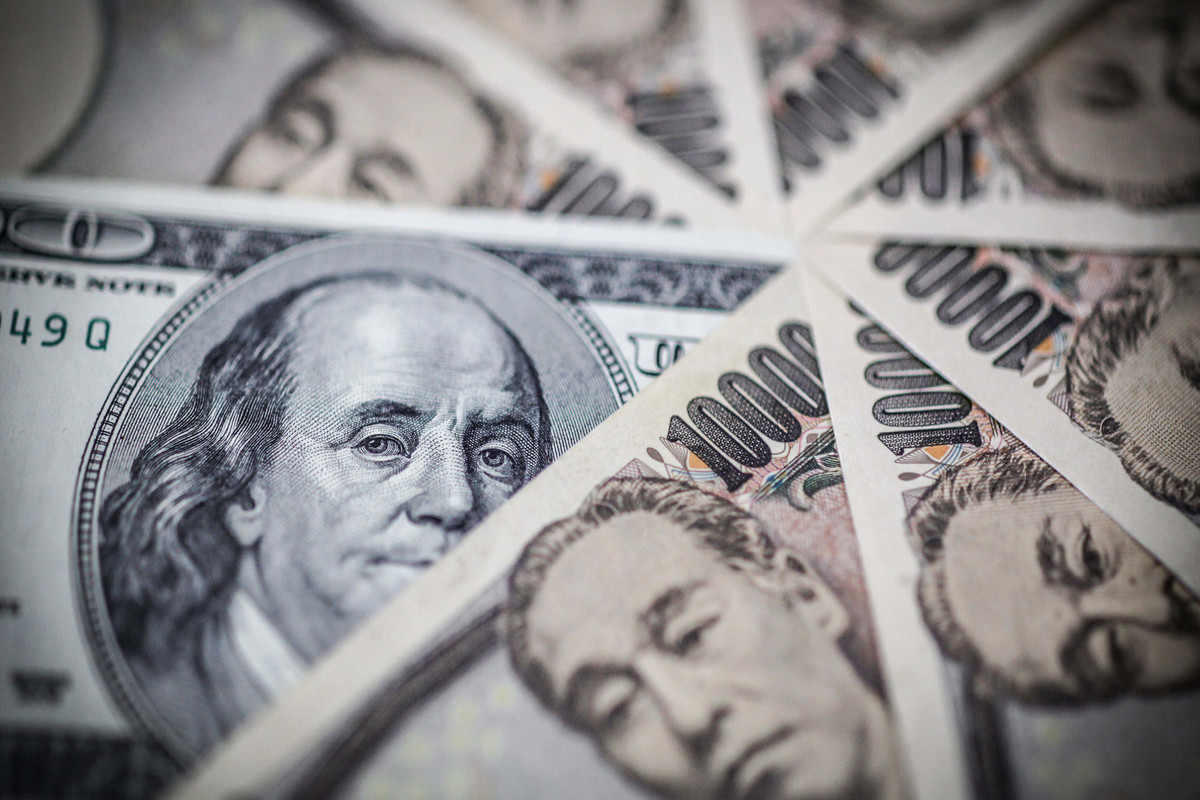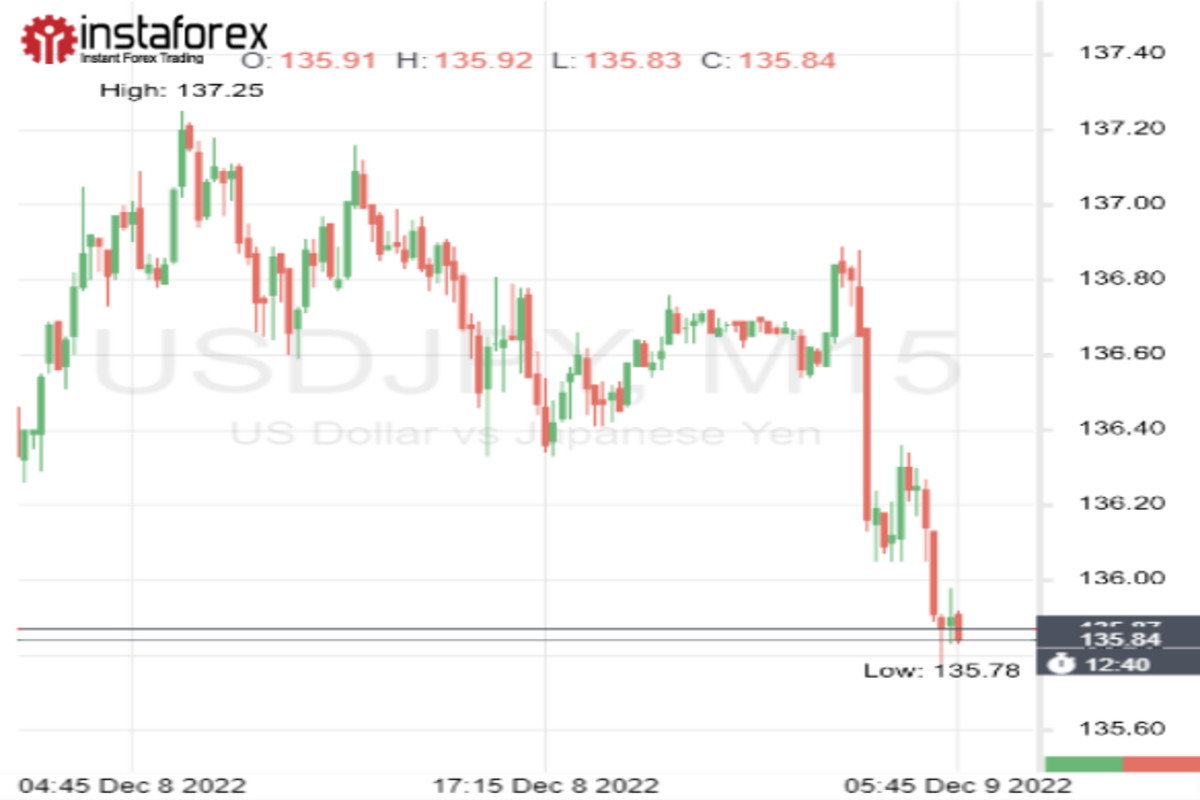
By the end of the week, the dollar was under pressure from negative sentiment about the future prospects of the U.S. economy. This led to a sharp fall on many fronts. USD/JPY was no exception
On Friday morning, USD/JPY plummeted by 0.6% and dropped below the 136 level. The reason for the sharp decline was the general weakness of the greenback.

The DXY index fell more than 0.5% at the start of the day. The ground was knocked out from under the dollar's feet by increased fears of recession in the United States.
Weaker-than-expected US economic data contributed to the growth of speculations on the subject. A report from the Labor Department released yesterday showed that initial claims for state unemployment benefits increased more than forecast to 230,000 over the week, while the number of people receiving benefits after an initial week of aid jumped to a 10-month high of 1.671 million.
The fact that unemployment remained steady reinforced the market's view of the unenviable prospects for the world's largest economy. America could enter recession as soon as next year.
Another harbinger of a negative scenario is the inversion of the U.S. Treasury bond yield curve. Now the gap between the yield of 2-year and 10-year bonds is -83.7 bps.
Given all these factors, investors are concerned that the growing risk of a slowdown in economic growth may force the Federal Reserve to soften its monetary policy.
Currently, traders estimate the probability that the Fed will raise rates by 50 bps in December at 93%. At the same time, most market participants believe that the rate will peak at just below 5% next May.
Less hawkish market expectations significantly weigh on the U.S. currency. Against this backdrop, the dollar index has already lost more than 8% from its 20-year high reached in September.
Recall that this year's peak for the greenback was 114.78. The USD is now trading just above 104.
The dollar suffered the heaviest losses last month against the yen, which, on the contrary, showed the worst dynamics among the Group of 10 currencies throughout the year.
The JPY gained more than 7% against the greenback in November. The key catalyst was an increase in speculations about a slowdown in U.S. rate hikes, which led to a sharp collapse in U.S. Treasury bond yields.
The Japanese currency is extremely sensitive to changes in this indicator. Its significant dynamics always provokes equally strong movement of the yen.
At the moment, the yield of 10-year US government bonds is keeping its growth above 3.48%, which creates an obstacle for further strengthening of the JPY.
The US Consumer Price Index for November is expected to provide strong support to the yields. The report will be released next week, ahead of the Fed's interest rate decision.
Economists estimate that overall inflation will remain unchanged at 7.7%. If the forecast comes true and we do see a more robust figure, it could change the mood of the market considerably.
It is likely to bring back talk of a higher final level of interest rates in America and a continuation of an aggressive anti-inflation campaign.
Analysts at Danske Bank see a further hike in interest rates by 50 basis points (bps) and a hawkish message from Federal Reserve chair Jerome Powell for CY2023. Also, the neutral rate is expected at 5.00-5.25%.
Experts think that the steady rise in prices is the only chance for the dollar to hold out next week where in addition to the Fed meeting, the interest rate decisions of the ECB and Bank of England are also expected.
As for USD/JPY, it is likely to remain in a consolidation phase until U.S. consumer inflation data is released. Most analysts predict that the pair will trade in a narrow price range of 136-137 in the short term.
However, strong volatility in the asset is expected after the release of the key report. Depending on the data, dollar-yen might show either a strong upward bounce or a sharp retreat to the downside.
The next potential trigger for the pair is the Fed's decision on the interest rate, which will be announced on Wednesday, December 14.
Technical analysis of the USD/JPY pair
The fall below the neckline, built from the December 6 low at 135.96, put a lot of pressure on the USD this morning.
In addition, the USD/JPY asset failed to stay above the 200-period exponential moving average at 137.10, which also indicates the strength of the Japanese yen.
Meanwhile, the RSI relative strength index has shifted into a bearish range of 20.00-40.00, indicating the start of downward momentum.
In order to fall further, bears need to pull the pair below Friday's low of 135.77. This would take the pair to round support at 135.00, followed by the December 5 low of 134.13.
On the other hand, a break above the 200-EMA near 137.00 would open a quick path to Wednesday's high at 137.86. A takeover there would send dollar bulls to the November 25 high of 139.60.





















